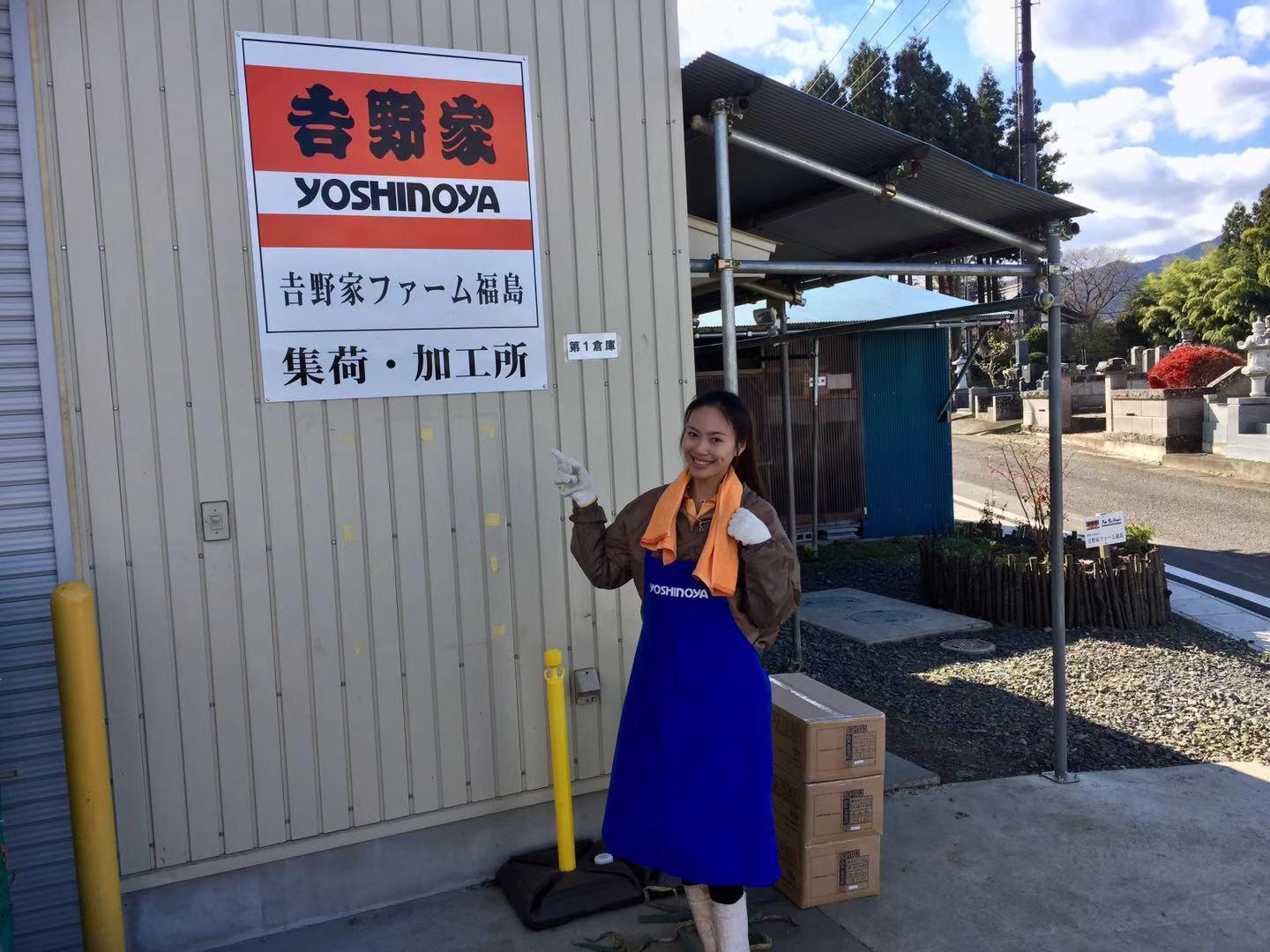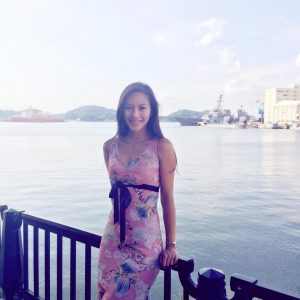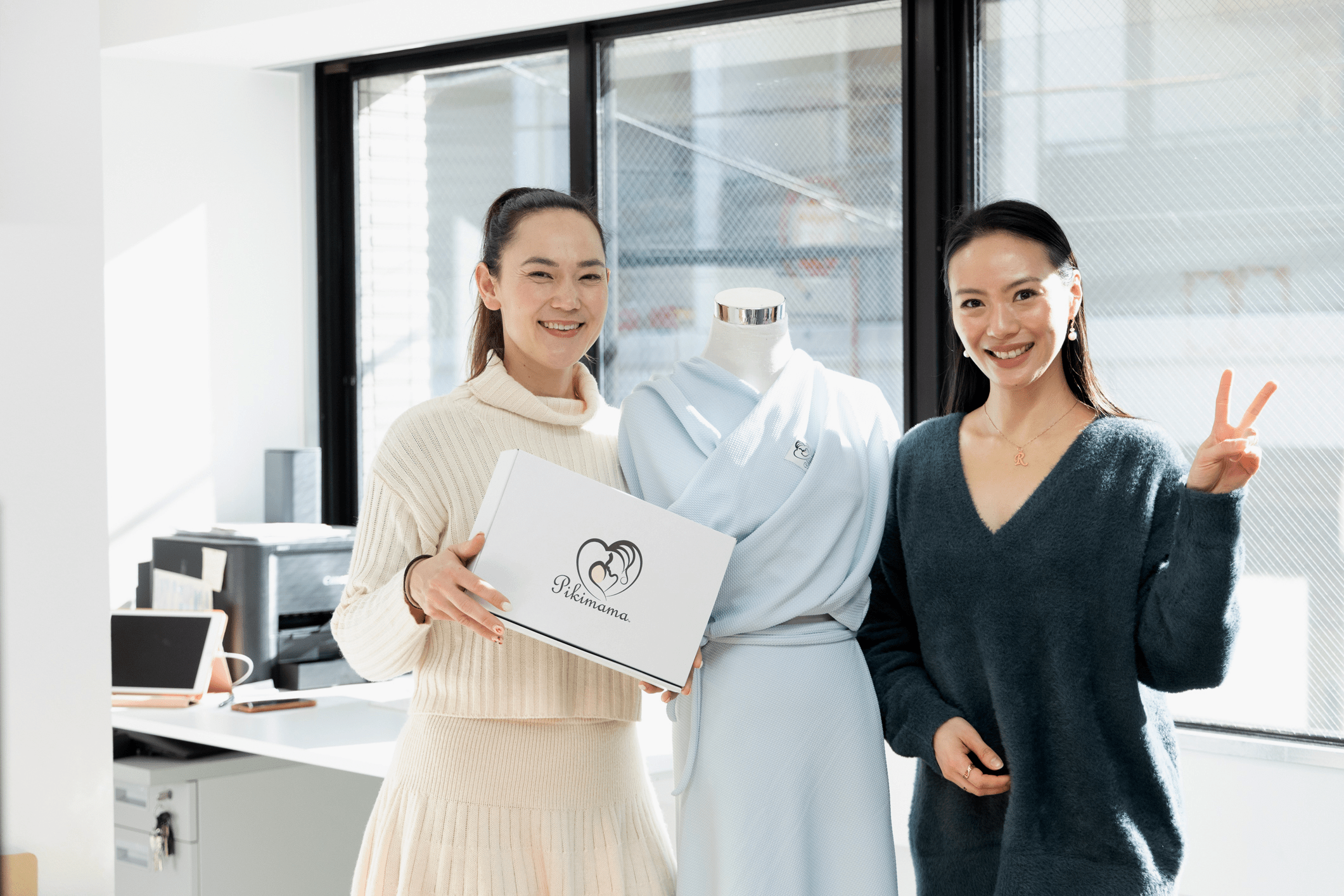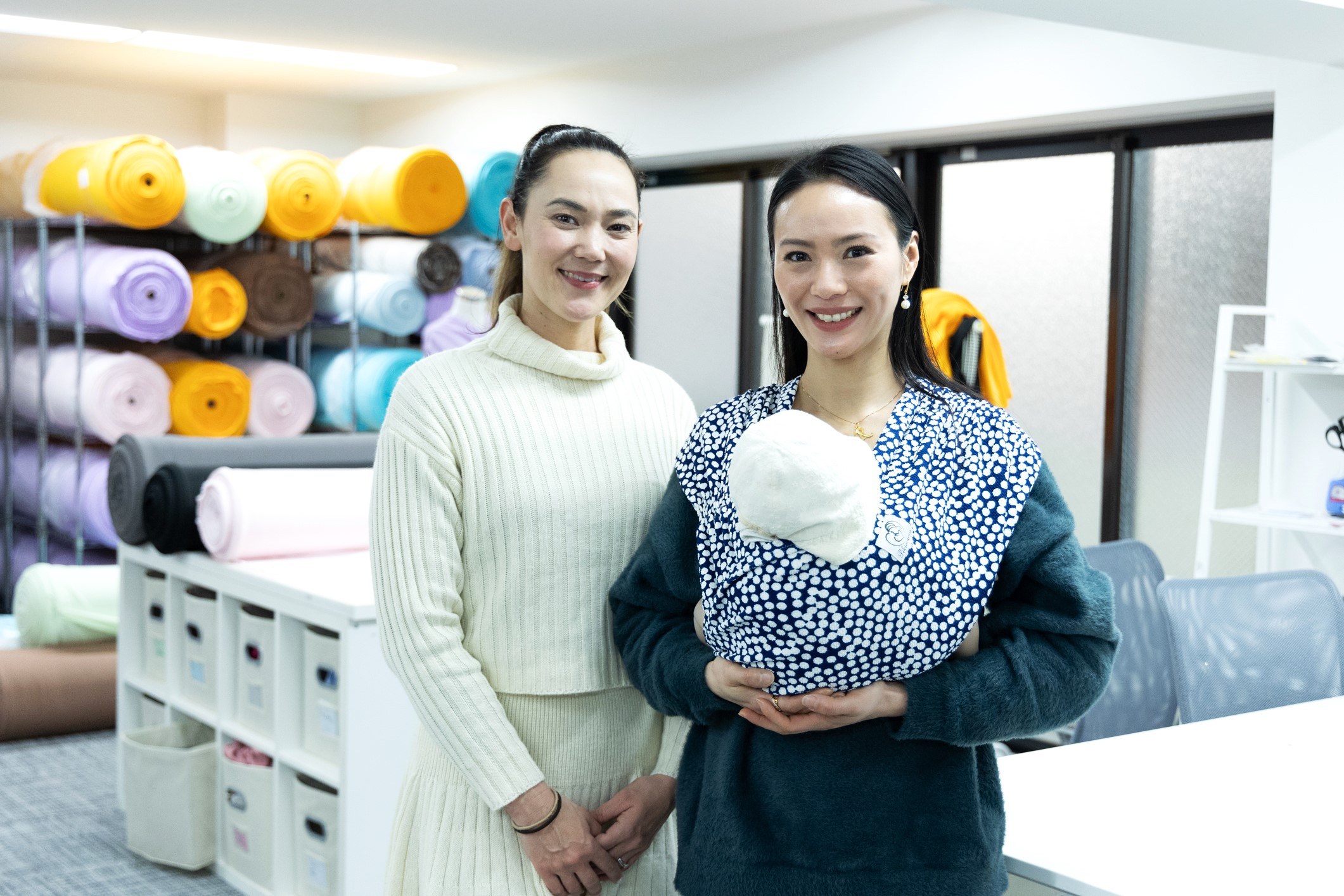My latest trip around Japan was to visit Fukushima and explore the agricultural industry there. To many Japanese, Fukushima is known as the “Fruit Kingdom” because of its many seasonal fruits. Peaches are the most famous, but large quantities of cherries, Japanese pears, grapes, persimmons, and apples are also popular. Moreover, the prefecture’s signature beef “Fukushima-Gyu” (福島牛)can only comprise of high grade Japanese Black-type cattle fed, raised, and processed within the prefecture.
最近、福島を訪れ、そこでの農業を深く知るために少し体験をしました。 日本人にとって、福島は、季節の果実が多いことから「果実王国」として知られていますね。 桃は最も有名らしいですが、チェリー、梨、ぶどう、柿、りんごなどが大量に売られています。 また、福島牛は、県内で飼養、飼育され、処理された高級な黒毛和牛のみで構成されているみたいです。
For many of us non-Japanese, however, the majority of what we have heard and know about Fukushima is related to the earthquake and nuclear meltdown disaster in March 2011. These media create great anxiety about nuclear radiation exposure and contamination in the Fukushima area, despite the fact that the prefecture is relatively large and mainly unaffected by the disaster. As such, many consumers, wary of the taint from the nuclear disaster, continue to avoid food carrying the Fukushima tag, and many farmers have complained about plunging prices for their produce. Speaking for myself, I was also initially rather concerned about making the trip to Fukushima and consuming Fukushima produce!
しかし、多くの外国人にとって、福島について聞いたことの大部分は、2011年3月の地震や原発危機に関連しています。これらのメディアは、福島地域の原子力被爆や汚染について非常に不安を感じています。実際は、福島県は面積が比較的大きく、主に災害の影響を受けていないということです。でも、原子力災害を恐れている多くの消費者は、福島タグを持つ食糧を避け続けており、多くの農家は農産物価格の下落を訴えています。 私自身について言えば、当初は福島へ行くことや福島産の食べ物を食べることについて、ちょっと怖くて心配しました!
Nevertheless, read on to see what I learned about the delicious vegetables grown on Yoshinoya Farm Fukushima, as well as watch me harvesting some vegetables!!
ですが、吉野家ファーム福島で育ったおいしい野菜についてを学んだり、野菜を収穫している私の経験について書きましたので下記をご覧くださいね!
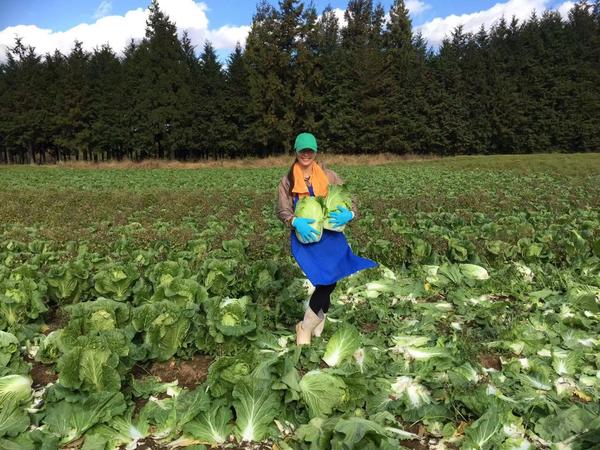
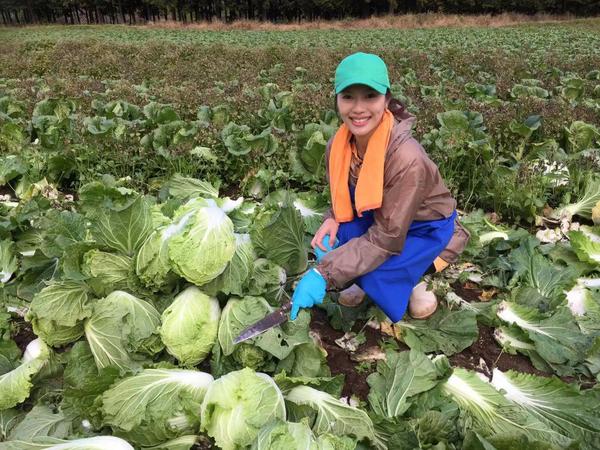
*~*~*~*
Have you heard of Yoshinoya?
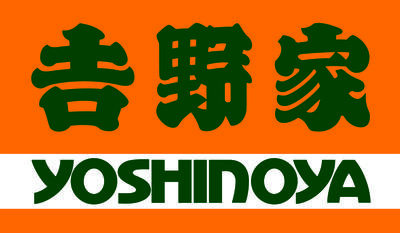
Yoshinoya (吉野家) is a Japanese multinational fast food chain, and the second-largest chain of beef bowl (牛丼, gyudon) restaurants. (By the way, the largest chain is Sukiya.) Established in Japan in 1899, the chain now has over 2200 restaurants world-wide! The headquarters are in Tokyo, and the original store was opened just outside the Tsukiji fish market. Some trivia: In Southeast Asia, Yoshinoya has its largest presence in Indonesia with over 70 stores!
皆さんがご存知だと思いますが、吉野家は、日本の第二位の牛丼チェーン店です。(因みに、第1位はすき家ですよ。) 1899年に日本に設立されたチェーン店は現在、世界中で2200以上の店舗を持っています! 本店は東京にあり、第一号店は築地の魚市場の外で開店しました。
トリビア: 東南アジアでは、吉野家はインドネシアで70を超える店舗で最大の存在です!
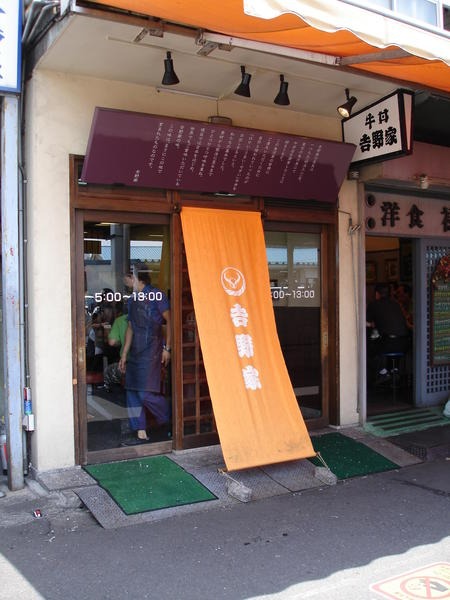
Earlier in 2018, after visiting the fish market and tuna auction at Tsukiji, I had the chance to actually try a gyudon (beef bowl) at the original Yoshinoya restaurant! Unfortunately, the market and store have now been moved to Toyosu and no longer exist at the historical site.
2018年、築地の魚市場やマグロの卸売市場に出かけた後、第一号店の吉野家レストランで牛丼を試食してみました。 残念なことに、市場と店舗は現在豊洲に移転し、もはや有名な築地には存在していません。
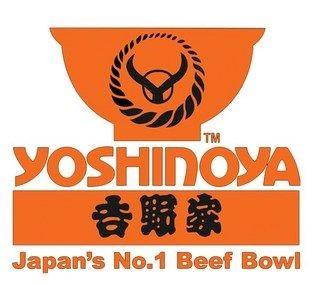 |
|---|
| Fun fact: Yoshinoya’s logo! The Logo of Yoshinoya is the “bull horn”, and was invented by Yoshinoya’s founder Eikichi Matsuda. The idea of the “bull horn” logo derived from the initial letter of “Y” from Yoshinoya’s name written in English, while the rope surrounding the horn represents the “Yokozuna” ranking (grand champion) in Japanese sumo-wrestling, also representing the “Yokozuna” quality of the food. The surrounding rope is made up of 27 rice grains to symbolize Yoshinoya’s signature beef rice bowls. |
| 吉野家のロゴについて! 吉野家のロゴは「雄牛の角」であり、吉野家創業者の松田栄一が考案したものです。 吉野家の英語で書かれた「Y」の頭文字に由来する「ブル・ホーン」のロゴのアイデアです。ホーンの周りのロープは、お相撲の「横綱」を表し、食べ物も「横綱」の質を表しています。、周囲のロープは、吉野家の代表的な牛の丼を象徴する27粒の米粒でできています。 |

*~*~*~*
About Yoshinoya Farm Fukushima
Yoshinoya Farm Fukushima (吉野家ファーム福島) came out of a joint venture in 2013 between Yoshinoya Holdings Co. and local farmers in Fukushima Prefecture to grow fruit and vegetables. The goal was to build a stable supply of agricultural products at lower prices for Yoshinoya’s chain of “gyudon” beef-on-rice restaurants and contribute to the reconstruction of the prefecture hard hit by the devastating Great East Japan Earthquake and tsunami of 2011, and dealt an even greater blow from the Fukushima No. 1 nuclear plant meltdown.
In the city of Shirakawa, Yoshinoya Farm Fukushima grows rice, various onions (including spring onions) and cabbages in a 4.3-hectare field 80 km from the nuclear plant. To boost the local economy and Fukushima’s reconstruction efforts, Yoshinoya employs local residents on the farm.
Yoshinoya Farm Fukushima also includes an on-site facility to process vegetables for use in Yoshinoya restaurants across the nation with strict radiation screening measures.
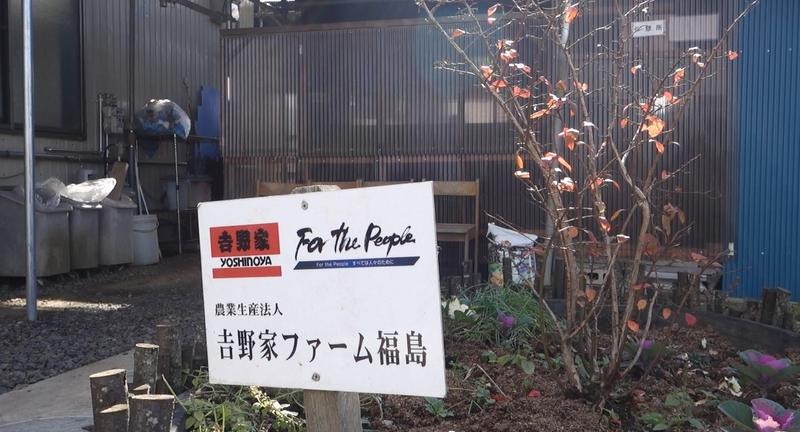
吉野家ファーム福島について
(株)吉野家ファーム福島は、主に牛丼チェーン「吉野家」向けにお米や野菜を生産しています。吉野家ファーム福島は、平成25年10月に農業生産法人を設立し、果物や野菜を栽培しています。平成23年に発生した東日本大震災による原発事故の影響で、農作物の風評被害が払拭されておらず、農家の経営状況は大変厳しい状況です。 ですので、吉野家の「牛丼」レストランの安い農産物の安定供給を図り、2011年の東日本大震災と津波による県再建に寄与することを目指しています。吉野家は、タマネギ、キャベツ、白菜、青ネギ等についてグループ企業内での生産や供給を目的に、白河市表郷地区で、後継者不足や農地所有者の兼業化に伴い耕作放棄されていた農地を再生し活用することを願っています。
白河市は、那須連峰を臨む福島県の南部中央に位置し、東京都心まで 185kmの距離にあります。 市の広さは、総面積 305.3k㎡となっており、 約半分を山林が占めています。
吉野家ファーム福島には、厳しい放射線査察措置を講じて全国の吉野家レストランで使用する野菜を処理する施設があります。こちらの集荷・加工所では、牛丼に使用されている玉ねぎだけでなく、お米、漬物に使う白菜、キャベツなど肉以外に使う野菜のほとんどを担当するそうです。
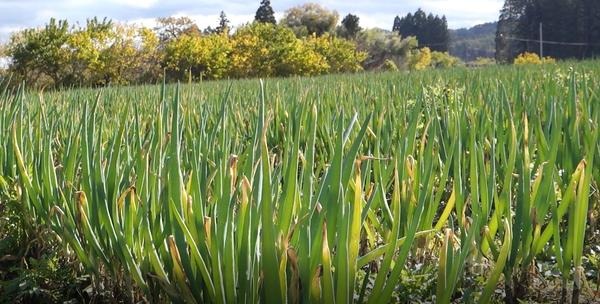
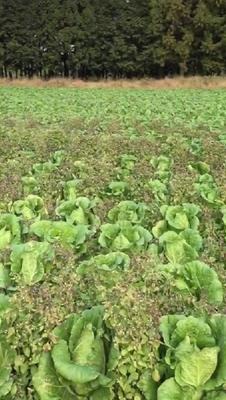
*~*~*~*
Farm Experience 1 – Peeling Green Onions!
ファーム体験1 – 青ねぎの皮を剥きましょう!

The first activity of the morning was to peel some freshly harvested Japanese Green Onions!
Japanese cuisine places a strong emphasis on quality and seasonality of ingredients. This is especially true for vegetables, which are a fundamental element of Japanese cooking.
朝の最初の活動は、新しく収穫した日本の青ネギの皮を剥くことでした。ネギは、日本料理においてはその食材の品質と季節性を重視しています。 これは特に、日本料理の基本的要素である野菜に当てはまります。
Negi, or spring onions, are included in many fried and boiled dishes in Japanese cuisine. In particular, they are used as a topping for Yoshinoya’s famous gyu-don and other domburi (rice bowl) dishes. Japanese “negi” are usually described as having a taste similar to the green onion, though sweeter.
ネギ、または玉ネギは、日本料理の多くの揚げ物と蒸し料理でよく使用されいます。 特に、吉野家の有名な牛丼や他の丼のトッピングとしてよく使用されています。 日本の「ネギ」は通常、玉ねぎより甘い味をしていると言われています。
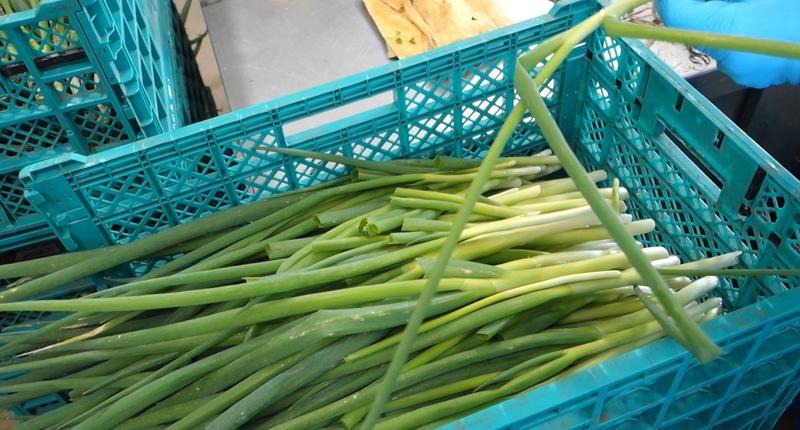
There are as many different varieties of negi as there are regions of Japan; however, the two most common are the Kanto variety with a long, white stem and the Kansai variety, whose stem is almost entirely green.
ネギには日本の地域と同じくらいの種類があります。 でも、一般的に言えば、2つの種類があり、関東ネギの長くて白い茎に比べて、関西ネギの茎はほぼ完全に緑色です。
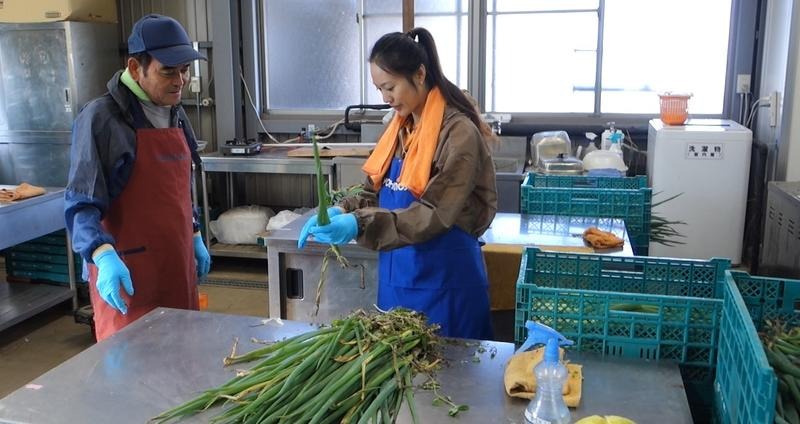

At Yoshinoya Farm Fukushima, we had a bunch of Japanese Blue/Green Onions called 青ネギ aonegi or 葉ネギ, hapa negi (“leafy green onions”) to peel. They were a lot longer than the usual spring onions I am used to in other parts of the world! The smell was very fragrant, though, and I can totally imagine it going well with marinated beef or in miso soup.
吉野家ファーム福島では、青ネギや葉っぱの形をした葉ネギと呼ばれる日本のネギの束がいっぱいありました。 世界の他の地域で慣れていた普通のネギよりもずっと大きくて長いですよ! しかし、香りがいいし、マリネされた牛肉や味噌汁に合うと思います!
We learned how to peel the onions properly, then separated them into baskets of 4kg bunches!
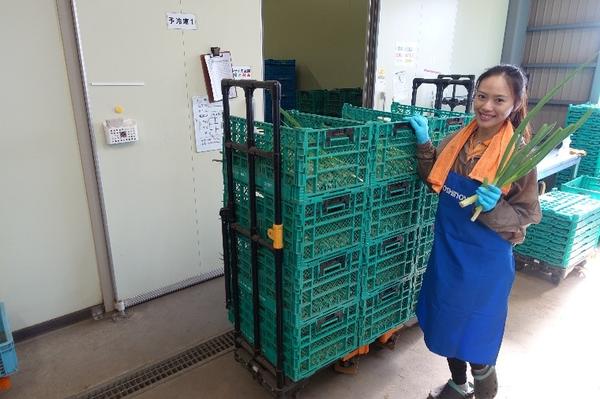
*~*~*~*
Farm Experience 2 – Harvesting Napa Cabbage!
ファーム体験2 –白菜の収穫をしましょう!

One of the main vegetables planted at the Yoshinoya Farm Fukushima is cabbage. As an inexpensive, versatile vegetable used to add nutrition and flavor to a broad range of meals (from soups and stews to pan-fried meals and side salads), it is not surprising that it would be a staple for Yoshinoya. In fact, Japan is one of the world’s top cabbage producers and the vegetable itself is one of the most frequently purchased vegetables in Japanese supermarkets.
吉野家ファーム福島に植えられた主な野菜の一つはキャベツです。 栄養と味を多様な食事(スープやシチュー、揚げ物、サラダなど)に加えるための安価で多目的な野菜として、吉野家の定番となることは驚くべきことではありません。 実際、日本は世界一のキャベツ生産者の一つであり、キャベツ自体は日本のスーパーで最もよく購入される野菜の一つです。
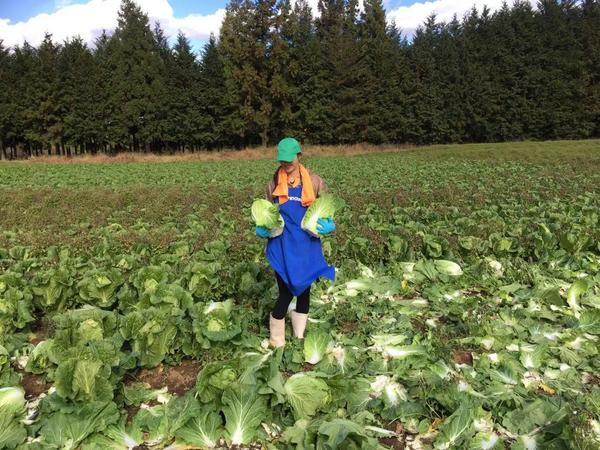
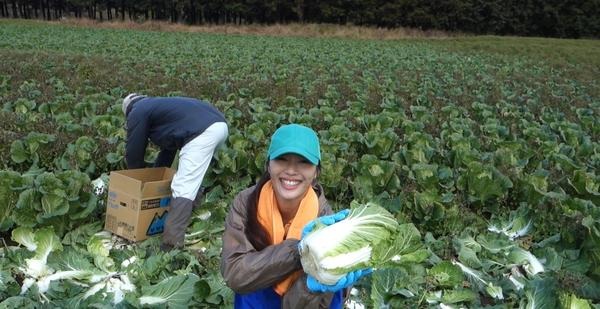
We tried our hand at harvesting “hakusai” or Chinese cabbage (also called Napa Cabbage) straight from the farm!
私たちは、農場で新鮮な白菜(ナパ・キャベツとも呼ばれる)を収穫することを体験しました!!
Hakusai is popular in many parts of Asia, where it is often pickled. For example, Korean cuisine uses hakusai to make kimchi. In Japan, hakusai is also pickled in a dish known as hakusai no sokusekizuke (白菜の即席漬け), where the cabbage is marinated in a vinegar-based marinade. Furthermore, fresh hakusai is a very popular ingredient in hot pot (nabe) dishes.
白菜はアジアの多くの地域で人気があります。 例えば、韓国料理は、白菜を使ってキムチを作ります。 日本では、白菜の即席漬けと呼ばれる料理がよくありますね。さらに、新鮮な白菜は、鍋料理で非常に人気のある野菜だと思います!
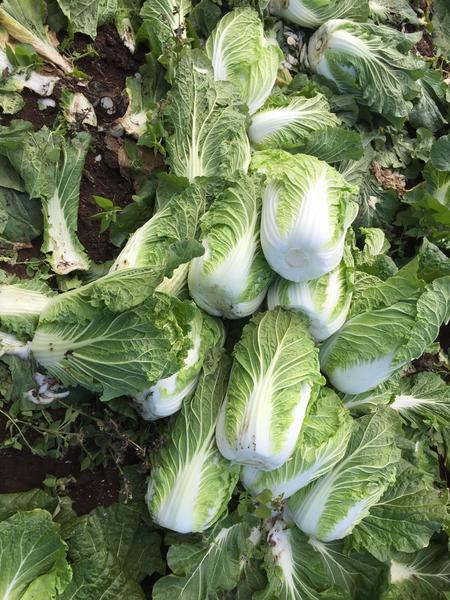
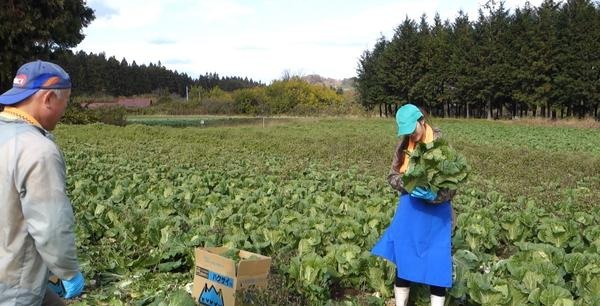
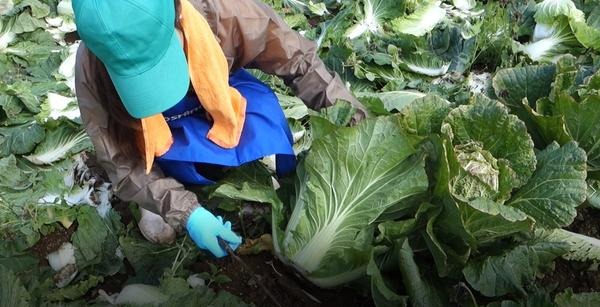
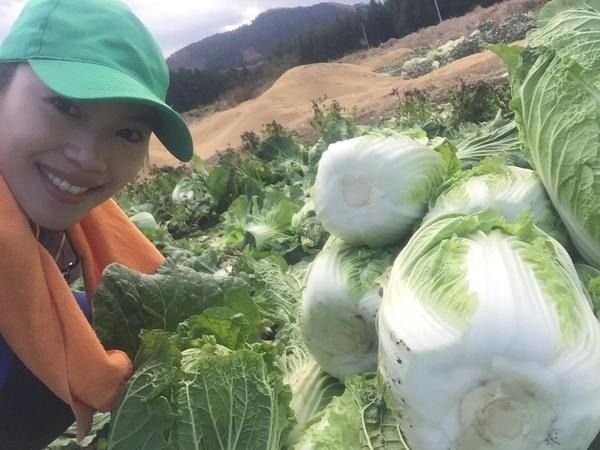
Some of the harvested cabbages ready to be put into boxes and moved to the processing facility.
収穫した白菜の一部を箱に入れて処理施設に移す準備ができました。
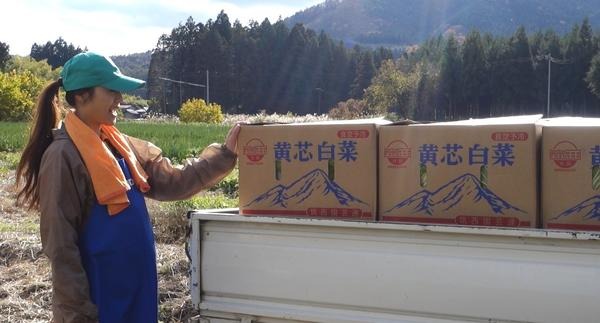

The napa cabbage was much bigger and heavier than I had expected!! They grow up to 4 kgs and can be quite heavy to lift! Freshly harvested, they are super juicy and delicious!
白菜は、私が予想していたよりもはるかに大きく、重かった!! それらは4キロまで成長し、持ち上げるのにかなり重たいですよ!!でも、新鮮な白菜はとてもみずみずしくて美味しそうですよ!
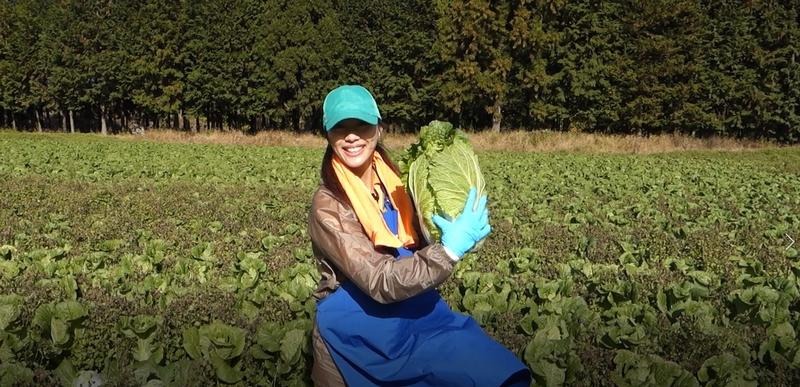
*~*~*~*
After Harvesting: Try a Yoshinoya Beef Bowl!
収穫後:牛丼の試食をしましょう!
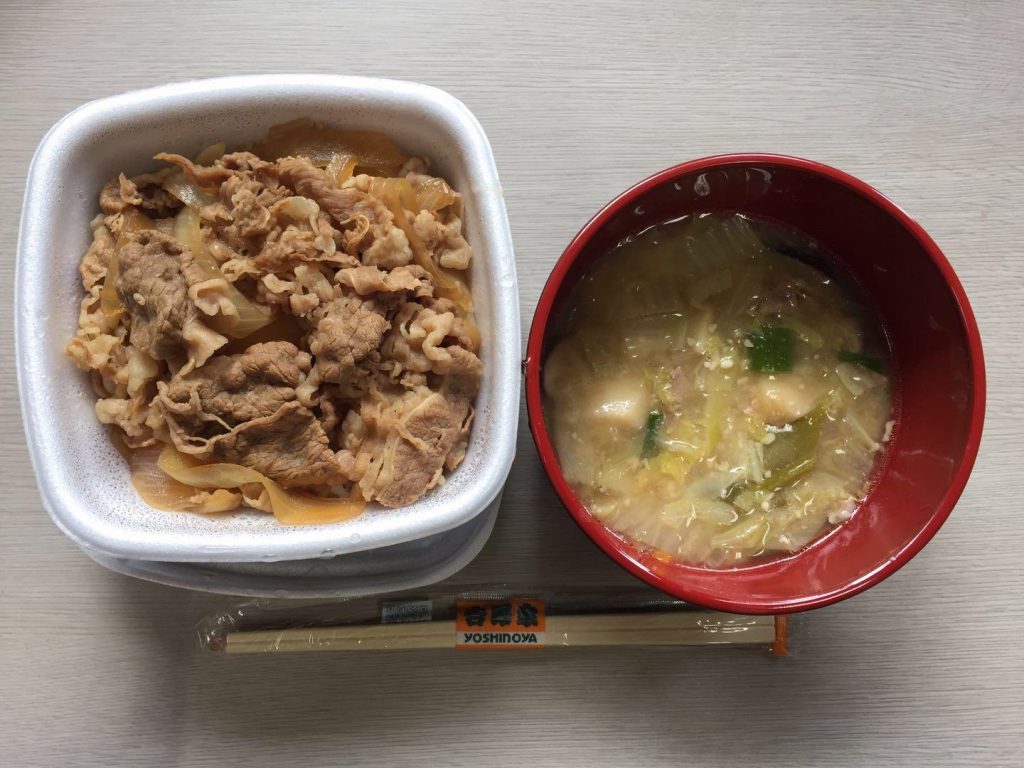
After all the hard work peeling green onions and harvesting napa cabbages, I worked up quite an appetite! As a reward, we had the chance to try a Yoshinoya set meal of gyudon and soup made with vegetables straight from the Yoshinoya Farm Fukushima! It was absolutely delicious.
収穫体験の後に、お腹が空いていたので、吉野家ファーム福島の野菜を使っている牛丼の試食会で食べました!
こちらが試食会で振る舞われた牛丼です!とても美味しかったです!
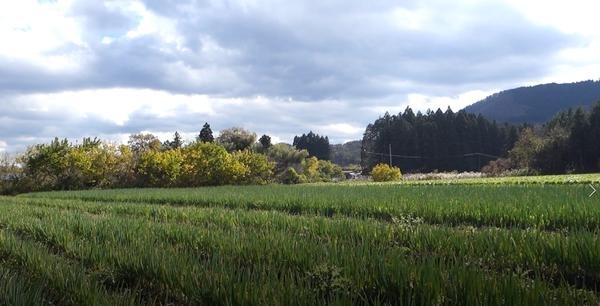
*~*~*~*
Final Thoughts
I found it very meaningful that Yoshinoya made a big effort to support Fukushima’s agricultural industry and economy by establishing the Yoshinoya Farm Fukushima. Now in its 5th year of operation, I am sure that the farm makes people feel connected to Yoshinoya as a nationwide and international franchise even when they are out in a remote, rural area. Moreover, it was very meaningful to experience being on a farm and harvesting vegetables in Japan for the first time – I now cherish the hard work of farmers so much more and the fresh vegetables that we have access to in Tokyo!
最後の一言
福島に住んでいる人に対して、全国展開の吉野家が、とても身近なお店に感じられると思います。また、初めて農場で野菜を栽培する体験ができるのは、とても意味がある体験でした。体験の後、私は今、農業に携わる人たちの苦労を理解でき、それを大いに大切にしています。そして、東京で普段変える新鮮な野菜がどこから流通されているかを意識しています!新鮮な野菜や米を使った牛丼は格別で、とても美味しかったです!みなさんもぜひ、お近くの吉野家に足を運んでみてはいかがでしょうか?

